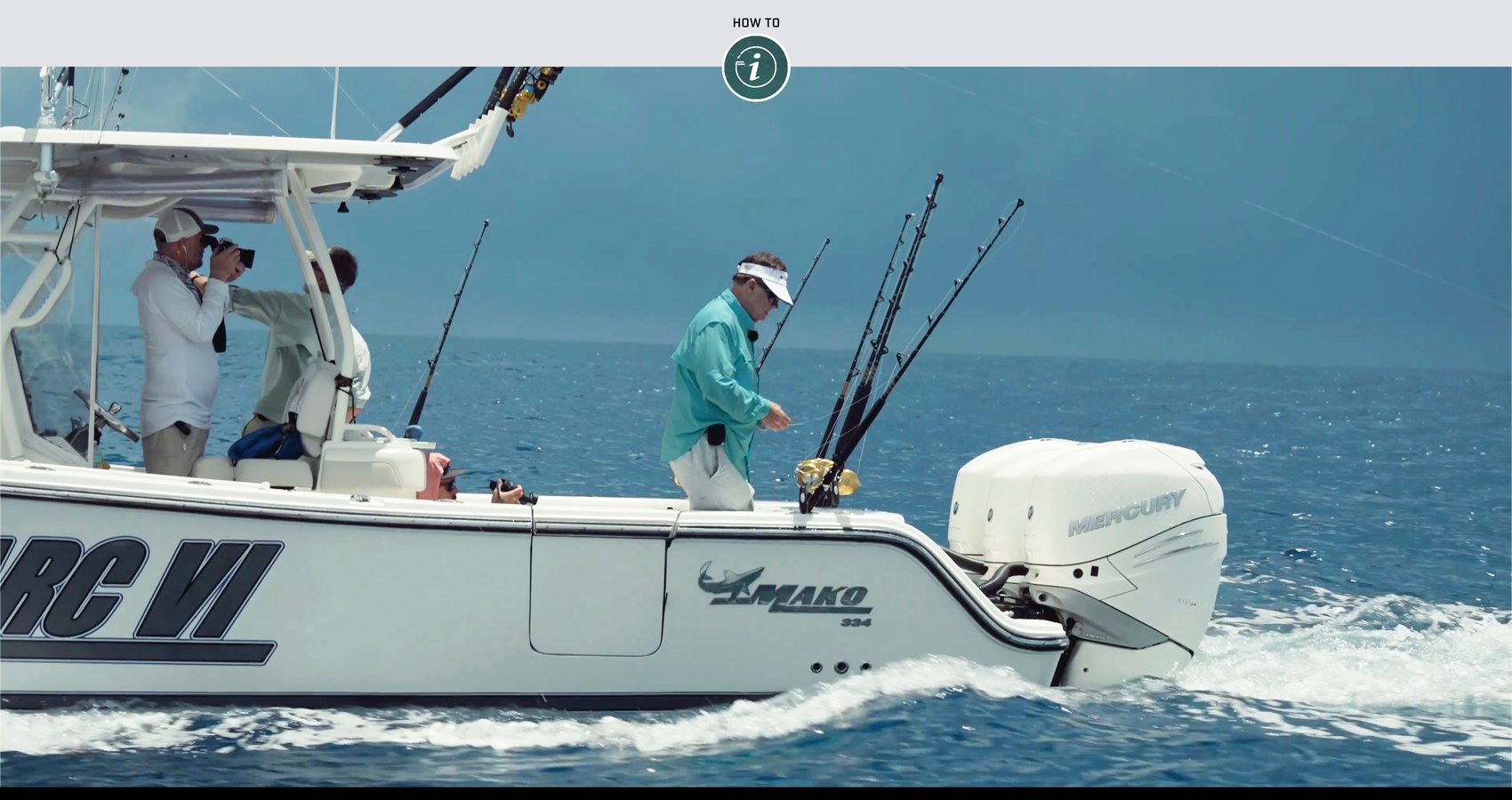The host of George Poveromo’s World of Saltwater Fishing loves the feeling he gets when crossing from Florida to The Bahamas in his boat. While the distance to Bimini from Miami is only about 57 miles – a journey Poveromo has made countless times – he has also made the 252-mile trip from Miami to Cape Eleuthera in his MAKO® 334 CC, which is powered by three Mercury Verado V10 400hp outboards. Having the right equipment and instruments on board help to make an offshore run of this distance in an open boat of this size possible.
George loves to troll for mahi, sailfish, white and blue marlin, tuna and wahoo. He also bottom-fishes for trophy-class snapper and grouper. The abundant fishing, combined with beautiful changes in the water color as you cross from the deep blue Gulf Stream to the shallow, turquoise bank of The Bahamas makes the islands one of his favorite weekend boating destinations.
Clearing customs is a lot easier now, too, with The Bahamas Customs & Excise Department’s new Click2Clear (C2C) system. To access the new system, you first must register at www.besw.gov.bs/TFBSEW/registration/registrationPage.jsp.
Safety First
In preparing for a weekend trip to The Bahamas in your boat – or anytime you are planning an offshore crossing for that matter – it’s essential to prioritize safety. Make sure your boat is in top operating condition and has recently gone through a thorough service check to help prevent any mechanical issues from occurring on your trip.
Be sure to check the forecasts for the duration of your voyage, and before you set out, file a float plan that lists your itinerary, the passengers you are bringing with you and a detailed description of your boat. Visit the U.S. Coast Guard site at https://uscgboating.org/recreational-boaters/floating-plan.php for more details, including how to download a float plan form.
While your boat always should be equipped with the requisite safety gear, including life jackets, throw cushions and flares, there are additional items you should pack for a journey to The Bahamas. George recommends bringing along an ACR Emergency Position Indicating Radio Beacon (EPIRB) that you can use to send a satellite distress signal in case of an emergency. Just be sure to register your EPIRB before you depart.
George also advises having a Personal Locator Beacon (PLB) for each of your passengers. In addition, ACR manufactures a two-way satellite messaging device called the Bivy Stick® that allows you to text with emergency services (and home) when you are outside of cellular range. You can connect the ACR Bivy Stick to your smartphone via Bluetooth or use it as a standalone device. If you head offshore often, you also may want to invest in an inflatable life raft.
As the saying goes, “There is safety in numbers.” One of the best ways to ensure a safe crossing to The Bahamas is to make the journey with another boat. When you get to the islands, you’ll also enjoy the company.
Fuel Management
Even with fuel-efficient Mercury outboards powering your boat, it’s important to know its range and fuel consumption so that you can calculate the appropriate speeds to run your boat at so that you arrive safely to your destination. At minimum, include a 10 percent fuel reserve in your calculations. Keep in mind that at the start of your trip, with your tank full, fuel consumption will be at its highest. As you burn off fuel, the boat will be lighter and your consumption rate will improve.
Once you have calculated your fuel use for the trip, keep track of its consumption on the boat’s engine data-management display while you are traveling. The Mercury VesselView® system makes detailed monitoring simple and easy.
Today’s intuitive marine electronics also can help you plan a safe and efficient route to The Bahamas. George uses a Simrad® chartplotter on his boat, which has an auto-routing feature that automatically calculates the best route based on your boat’s draft. All you need to do is enter your departure site and destination, and the chartplotter does the rest. Following a route on your plotter is simple and adds a level of safety when you are running in rainy or low-light conditions.
Once you have your safety equipment stowed on board and have planned your route and fuel consumption for the trip, you can relax and enjoy trolling for fish or simply watching the water go by as you make your way to Bahamas.
See more from George Poveromo at GeorgePoveromo.com, or on Facebook, YouTube and Instagram.
All trademarks are the property of their respective owners.
















